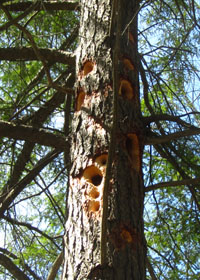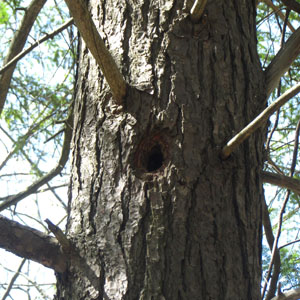 |  |
    
|


|
Tree cavities provide shelter for birds from predators. There are two kinds of nesting cavity birds; those that create their own nesting cavities (primary cavity nesters) and those that use pre-existing cavities (secondary cavity nesters). Insects or pathogens have also been found to assist in formation of cavities that are used by cavity-nesters. The amount of forested land in North America has greatly decreased over the last 200 years. Many trees that have nesting cavities are not structurally sound, and are cut down in urban environments to prevent damage to property. As a result, there is a shortage of suitable nesting sites for both primary and secondary cavity nesters. |
| Finding a birdhouse designed specifically for the favoured bird is key to success. Bird species prefer different nesting conditions, whether it's the size of the entrance hole or the height the birdhouse is placed off the ground. | |

©2014 Cranmer Earth Design ![]()
